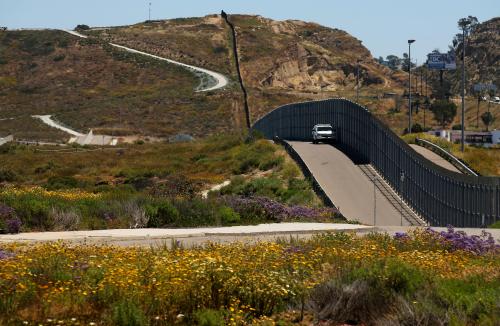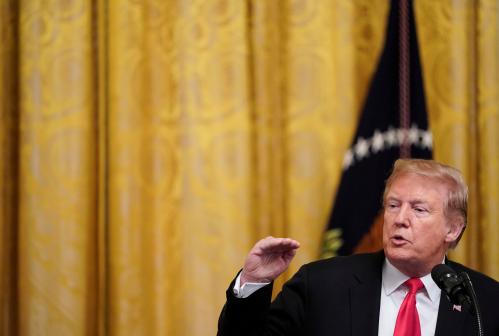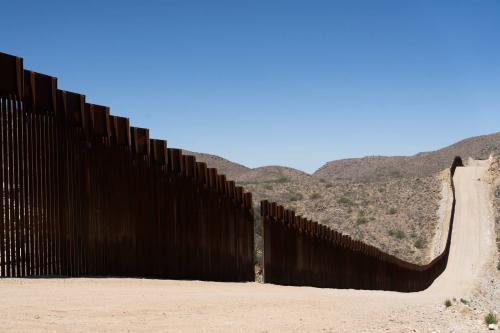Since the first day of the new administration, President Joe Biden has forcefully begun to reshape the nation’s immigration policy. Over the course of his first few weeks in office, the new president offered an outline of comprehensive immigration reform, issued no fewer than eight separate executive actions related to immigration, and this week will release a full legislative proposal with House Democrats.
Mr. Biden’s immigration policies are among the most progressive of any president. While everyone expected him to make a dramatic break from the hardline policies, inefficiently spent funds, and inhumane endeavors of his predecessor, Donald Trump, Mr. Biden is not just reversing Mr. Trump’s policies, but the policies designed and/or administered by previous presidents.
The first thing President Biden has done is change the narrative on immigration dramatically. For five years, Mr. Trump controlled the immigration policy discussion nationally, largely through lies, misinformation, hyperbole, and skewed data. As a candidate and as president, he convinced legions of Americans that immigrants from Mexico composed the vast majority of new undocumented individuals; that terrorist organizations were infiltrating caravans in Central America and entering the United States; that undocumented individuals were largely rapists, murderers, and drug dealers; and that immigrants contributed nothing to the American economy. Each claim (and many more) were entirely incorrect.
The Trump narrative was used to convince the public and members of Congress to support his policy goals—closed borders, denied refugees, overcrowded detention facilities, children separated from their parents and locked in cages like zoo animals, and aggressive interior enforcement.
Executive action served Mr. Trump fairly well in advancing his policy views, and Mr. Biden has taken the same approach. These executive actions—executive memoranda, presidential proclamations, and executive orders—fall into three basic categories: border/entry policy, interior enforcement, bureaucratic organization.
Revising border/entry policy
The new administration is focusing comprehensively on issues related to entry into the United States. Mr. Biden issued a presidential proclamation ending the Trump-era national emergency at the U.S.-Mexico border. The revocation of the emergency also cuts off the re-directed funding that the Trump administration moved from the Department of Defense and other non-border wall-related accounts to border construction. In effect, this action limits the construction of new border wall, except for funds explicitly appropriated by Congress for that purpose.
In addition to ending the emergency declaration, President Biden issued an executive order “creating a comprehensive regional framework to address the causes of migration, to manage migration throughout North and Central America, and to better provide safe and orderly processing of asylum seekers at the border.” This order reflects multiple issues that the Trump administration failed to consider adequately. First, there is a humanitarian crisis in areas of Mexico and Central America, driving people to flee. Under our laws, some portion of individuals arriving at our southern border would qualify for asylum for fleeing political violence or persecution. The stoppage or slowdown of processing asylum requests simply added to that humanitarian crisis. Through this executive order, the Biden administration signaled that part of solving the nation’s immigration policy challenges involves focusing on the root causes that exist in countries of origin.
The final part of the Biden administration’s approach to revising the nation’s entry policy came through a presidential proclamation to end what has commonly known as the “Muslim Ban.” Early in the Trump administration, the president issued a series of executive actions that effectively banned individuals based on their Muslim religion. In order to pass constitutional and legal muster, those actions were amended in order to apply to classes of individuals by country—almost exclusively from Muslim-majority countries in various areas of the world. The Biden proclamation rescinds that action and relies on the existing strength of the system in place to make judgments—in our embassies around the world and at points of entry—to determine the suitability and security of an individual entering the United States.
Interior enforcement
The early Biden executive actions related to interior enforcement focus in two areas. The first revokes a Trump-era executive order (EO 13768) that sought to punish “sanctuary cities” who refused to cooperate with federal immigration authorities in policing interior enforcement. The Trump-era EO also effectively labeled any undocumented individual as “criminal” at whom all of the available federal resources should be directed to remove. The Biden administration policy, although not explicit in the words of the executive order, will employ an approach similar to other presidents, focusing on violent criminals or individuals who commit violent crimes while in the United States.
However, the brevity of the Biden executive order on civil immigration enforcement priorities does not state explicitly what those priorities will be. Instead, it says what those priorities will not be. The track record of removal actions and interior enforcement from the Obama-Biden administration is not necessarily the model for the Biden-Harris administration, and many immigration reform experts and advocates will be looking for something different. Issues of enforcement priorities will serve as an ideal test of whether the Biden administration will chart a new path or will simply revert to policies from prior Democratic administrations.
The second action the Biden administration took with regard to interior enforcement involves Deferred Action for Childhood Arrivals (DACA). Shortly after Mr. Biden took office, he issued an executive memorandum “preserving and fortifying DACA,” the Obama-era policy that provided a safe haven from enforcement for individuals who came to or stayed illegally in the country as minors. The policy would allow individuals to register with the government and to attend college and/or to be able to work legally. The Trump administration sought, largely ineffectively, to scrap DACA, and Mr. Biden’s action signals a clear desire to honor the previous commitment to young individuals who qualify under the program.
Bureaucratic reorganization
The Biden administration took three steps to change the manner in which government operates with regard to key areas related to immigration policy. The first came from an executive order directing the Census Bureau to include undocumented individuals in the census count—a practice that has been observed throughout history. This reverses a Trump administration effort to exclude these individuals, which failed to pass muster before the U.S. Supreme Court.
The second effort, via an executive order, recognized that many Americans and individuals around the world lost faith in America’s legal immigration system. Bureaucratic delays became purposeful and commonplace during the Trump administration, as presidential and appointee rhetoric was openly hostile toward immigrants. This EO also works to improve inclusion efforts for new Americans, in an effort to work toward reducing anti-immigrant sentiment across the country, starting with the government.
The third effort establishes a taskforce, via executive order, to solve one of the most serious, homemade immigration-related humanitarian crises of recent time: child separation. While family separations happened during prior administrations in specific cases, to the horror of many Americans, the Trump administration substantially expanded and institutionalized the practice until a federal judge ordered an end to the practice and demanded reunification. Mr. Biden has sought to use the resources of the federal government both to end the practice and to reunite families who are still separated.
These early executive actions are fundamentally reactive and restricted to the powers the president can wield without Congress. Those actions also institute policies that last only as long as the president in power desires. What they cannot do is make the overall immigration system fair, efficient, responsive to labor market demand, and reflective of the majority of Americans’ values. This week the White House and congressional Democrats introduced the first major comprehensive immigration reform bill since 2013. In the last 20 years, two of these efforts have failed. But the alternative to legislating this issue is a status quo that at best keeps immigrants in a state of uncertainty and misses the opportunity to design a functioning system for 21st-century reality.








Commentary
Biden’s immigration reset
February 19, 2021